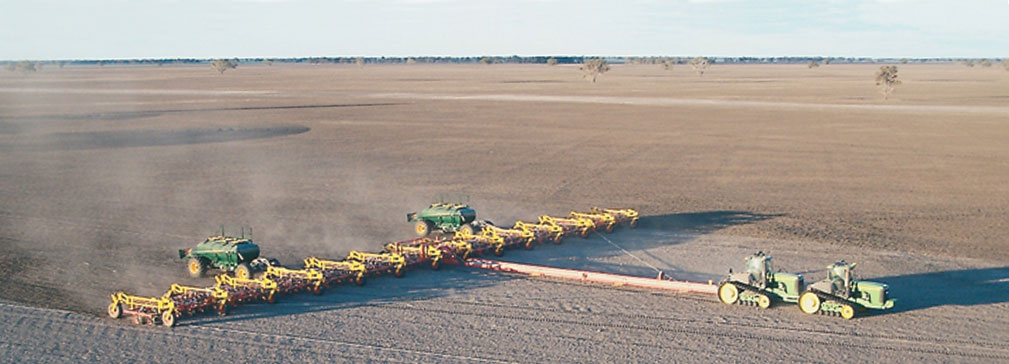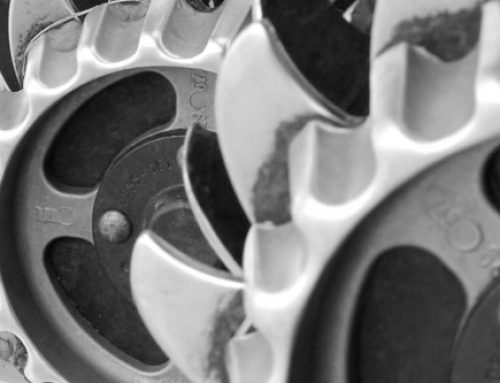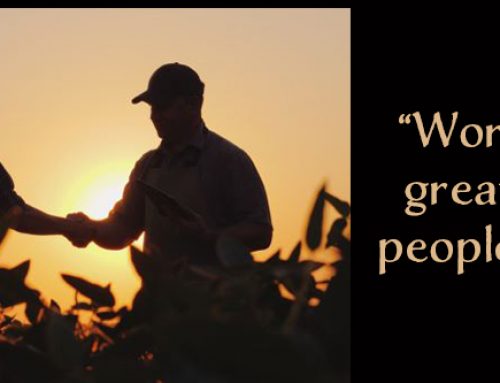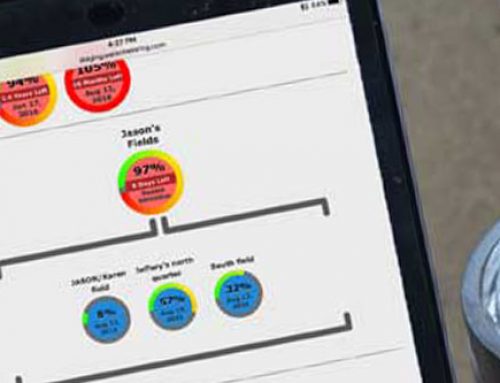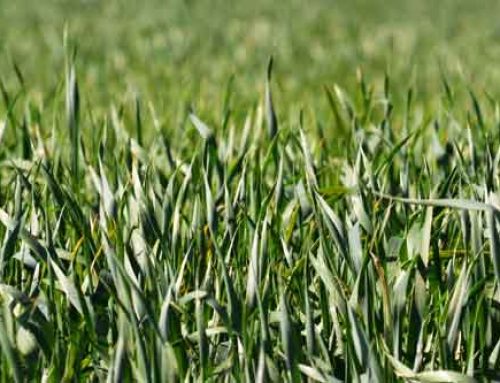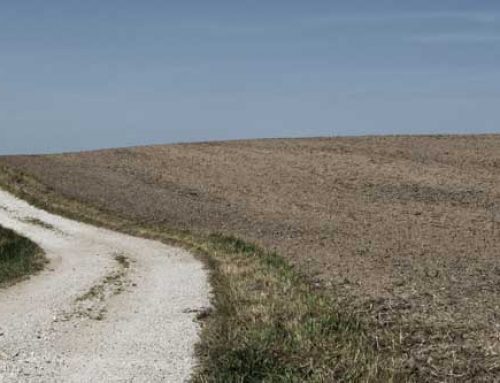Photo courtesy of Gavin Zell – 212 foot (65 m) Multifarming Systems airseeder, Moree, New South Wales, Australia.
Joel Heppel Agronomist in Ulysses, Kansas came to us from the land down under. In 2012, Joel and his wife were looking for a way to move closer to some of her family, when they discovered an open agronomist position in Ulysses with Crop Quest. This provided the perfect location to be between family in Denver, Colorado and Amarillo, Texas. Below, Joel shares his vast knowledge in global production and agronomy.
Australia is a country that everyone has heard of, but few people know much about. Its stereotype of being wild and uninhabited is partially true. Australia has one of the lowest population densities in the world at 8 people/sq mile (US is 79 people/sq mile). Kangaroos outnumber humans by more than two to one. Australia is both the driest and flattest inhabited continent and has a climate that is dominated by periods of severe droughts followed by excessive floods. Despite the above challenges, Australia retains an important role in world agriculture as one of the largest exporters of wheat, beef and cotton.
When considering differences and similarities between Australian and US agriculture, crops produced immediately comes to mind. Corn and soybeans are relatively minor crops in Australia with wheat, cotton, canola, chickpeas and sorghum being produced across the most acres. Although Australia grows genetically modified cotton and canola, all corn and soybeans produced are non GM.
The US has significantly more cropping land than Australia and produces vast amounts of commodities. Australia has less overall output at a national level, but production is conducted on a large scale particularly in the west and in the central wheatbelt. Australia’s two largest privately owned grain producers cropped in excess of 200,000 acres each in 2013. This has driven innovation including airseeder bars that are 120ft wide and a recently released Australian made 60ft draper front. One grower in collaboration with John Deere and an Australian implement maker has taken wide machinery to a new level. They developed a 212ft planter with two air carts pulled by two John Deere 9T tractors hooked together. All with one operator. The machine is capable of seeding 3,300 acres in 24 hours.
Part of the drive to increase farm size and reduce costs is due to the lack of an insurance program being available to Australian farmers. Insurance is able to be purchased from traditional insurance brokers but is primarily restricted to hail, wind and lightning/fire damage. No insurance is available to cover drought and floods. Australia is currently in the grip of drought affecting large areas of the eastern cropping lands. In the state of Queensland alone, 565,000 sq miles are drought declared. This comes on the back of significant flooding in 2010-2011 when large areas of Queensland and New South Wales were inundated, destroying standing crops and on-farm infrastructure. Arguments both for and against developing a government assisted insurance program are present. For now Australian growers continue to develop management strategies to remain profitable in a land of significant climate variability.
In recent years Australian agriculture has seen an increase in foreign investment. Foreign investment has not just been limited to broader agribusiness by the likes of JBS, Agrium and Cargill, but has also extended to the farm gate. Australian cropping land is still considered a good value on world standards. This and its proximity to Asia as well as the opportunity to buy large parcels of land have made it attractive to foreign buyers. A case in point was the commencement of Hassad Australia in 2009. Hassad is owned by the Qatar government and was established to ensure food security for their country. Since its inception, Hassad has spent around $500 million Australian dollars investing in agricultural land across the country. Another controversial major foreign land acquisition occurred in 2012 when Cubbie Station was sold to a group that was 80% Chinese owned. Cubbie Station is the nation’s largest cotton farm and has capacity to irrigate around 60,000 acres of cotton and can store 365,000 acre feet of water on farm. Public and government perception of international investments is cautious. Preserving national food security whilst increasing investments is a balancing act.
Despite our differences, Australian and US agriculture face many similar challenges. Australia and the US both face an increasing number of herbicide resistant weeds. Obtaining skilled labor, overcoming rising costs of production and an aging farming population are all challenges common in both countries that need addressing. Going forward, Australia and the US both have the opportunity to learn from each other’s experience to better manage for these challenges in the future.
Article written by: Joel Heppell, Ulysses, KS
Featured image by: Gavin Zell
